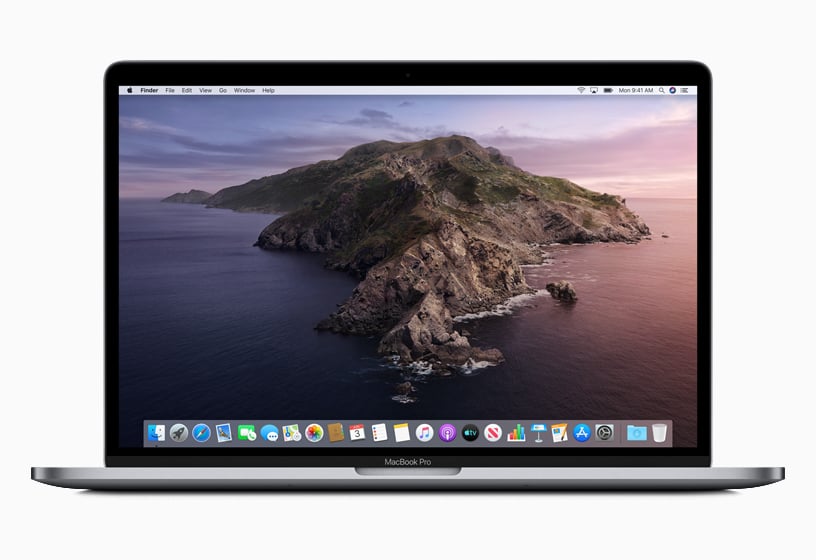The release of macOS Catalina marked a significant update for Apple’s operating system for Macs. Officially available to the public on October 7, 2019, this was the sixteenth major release. Its introduction phased out support for 32-bit applications, focusing solely on 64-bit to provide a more streamlined and efficient performance.
macOS Catalina brought with it a suite of enhancements that pushed the boundaries of what users can do with their Mac. Notable for its introduction of Activation Lock, it sought to boost security. The operating system also featured Apple Arcade, along with new entertainment apps that aimed to enrich user experience.
One of the standout features, Sidecar, allowed for Macs and iPads to work together more closely, showcasing Apple’s commitment to ecosystem integration. Catalina delivered a more interconnected experience for users who rely on multiple Apple devices.
📅 Release Date
- Announced: June 3, 2019, at Apple’s WWDC.
- Public Release: October 7, 2019 (source: Wikipedia, 9to5Mac).
Catalina succeeded macOS Mojave (10.14) and was later replaced by macOS Big Sur (11.0) in November 2020.
ℹ️ Key Features & Info
- 32-bit App Support Removed → Catalina only runs 64-bit apps.
- Sidecar → Use an iPad as a secondary display for your Mac.
- Apple Music, Podcasts, and TV apps → Replaced iTunes.
- Screen Time → Brought from iOS to macOS for monitoring usage.
- Find My → Combined Find My iPhone and Find My Friends.
- Voice Control → Enhanced accessibility with full voice navigation.
- Improved Security → System volume is read-only, making it harder for malware to modify system files.
🔄 Latest Updates & Support Status
- Catalina received regular security updates until July 2022, when Apple officially ended support.
- The final security update was Security Update 2022-005 (July 2022).
- As of 2025, Catalina is no longer supported by Apple and does not receive updates (source: Macworld).
📌 Summary
- Version: macOS 10.15 Catalina
- Released: October 7, 2019
- End of Support: July 2022
- Legacy Status: Still usable but no longer secure for modern use.
If you’re still on Catalina, Apple recommends upgrading to a newer macOS (currently macOS Sequoia, released September 16, 2024 (source: Setapp)).
Key Takeaways
- macOS Catalina released on October 7, 2019.
- The update emphasized 64-bit application support and advanced security.
- Catalina improved integration within the Apple ecosystem.
Key Features and Enhancements
Apple’s macOS Catalina brought significant updates to the Mac ecosystem, focusing on enhancing application functionality, system security, and the overall user experience. These critical upgrades catered to both productivity and entertainment, ensuring a more refined and secure operating system.
Applications and Ecosystem
Among the most notable shifts was the division of iTunes into three separate apps: Music, Podcasts, and TV. Each app now delivers a more specialized and streamlined experience. Apple Music takes over the music management role, while podcasts find a new home in the Podcasts app. The TV app is the place for movies and TV shows. The introduction of macOS Catalyst allowed developers to easily port their iPad apps to the Mac, enriching the variety of applications on the Mac App Store. Apple Arcade on macOS opened the door to a wealth of games, all accessible through a single subscription.
System Performance and Security
System security saw robust enhancements with macOS Catalina. Apple introduced Gatekeeper, which checks all apps for known security issues. A new Dedicated System Volume ensures system files remain separate and tamper-free. DriverKit and System Extensions provide a safer way for administering hardware and software extensions, moving away from kernel extensions that had broader access to the system. Regular security updates help keep the system safe from the latest threats.
User Experience and Accessibility
The new macOS boosted the user experience, with improvements like the Sidecar feature enabling an iPad to serve as a secondary display. Voice Control offers comprehensive voice commands for users with accessibility needs. Screen Time helps track and manage computer use, and the updated Photos, Notes, and Reminders apps provide a more useful and efficient experience. Safari, Finder, and iCloud Drive also received updates to enhance performance and functionality. Accessibility features are thoughtfully integrated, making the system more usable for everyone.
Compatibility and Ecosystem Integration
This section explores how macOS Catalina interacts with Apple devices and apps. It focuses on device support, connections with iOS and iPadOS, and tools for developers.
Device Support
macOS Catalina was designed to run on a variety of Apple computers. These include MacBook models from 2015 and later, MacBook Air models from 2012 and onwards, MacBook Pro models from late 2012 and forward, Mac Mini models from late 2012, iMac models from late 2012, iMac Pro (all models), and the Mac Pro from late 2013 and later. Notably, Catalina is the successor to macOS Mojave and marks Apple’s move to support only 64-bit applications.
Connecting with iOS and iPadOS
Catalina strengthens the ecosystem by syncing with iOS 13 and iPadOS devices. Apple introduced Sidecar with Catalina, allowing users to extend their Mac’s display to an iPad, which can then function as a secondary touch screen with Apple Pencil support. Additionally, improvements to iOS apps like Notes, Reminders, and Find My have been synced across macOS, providing a unified user experience.
Developer Tools and App Porting
Catalina introduces Catalyst, previously known as Project Catalyst, which helps developers port their iPad apps to the Mac App Store. This initiative opens new opportunities for Mac and iPad users to interact with a broader range of apps. Xcode, Apple’s suite of developer tools, has also been updated with additional features that simplify bringing iPad apps to macOS, further integrating the ecosystem.







